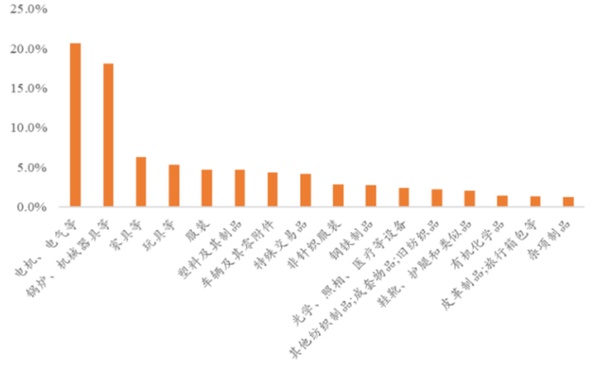US Customer Demands 5% Price Cut, Leaving Factory with Only 2% Profit: The Dilemma of Chinese Exporters Under Tariffs
Recently, US President Trump once again announced a major decision, planning to impose an additional 10% tariff on China. Previously, the US had already imposed a 10% tariff on Chinese imports on February 1st, which undoubtedly added fuel to the already complex Sino-US trade relations and posed significant challenges to Chinese companies exporting to the US.
Trump's frequent tariffs are hitting export market expectations
The US has always been an extremely important export market for China. In 2024, China's exports to the US reached $524.656 billion, a year-on-year increase of 4.9%, leading among many export destinations, far exceeding Japan, the second largest. However, the frequently changing trade policies of the Trump administration are continuously impacting the Sino-US supply chain structure, bringing many uncertainties to businesses.
This additional tariff hike is not to be underestimated in terms of its impact on business expectations. After the election, there was a significant change in business expectations, and the sudden and swift re-imposition of tariffs will be a considerable blow to the previously stable expectations.
Figure: Distribution of China's export countries

Under tariff pressure, businesses struggle to cope
The impact varies for businesses of different sizes. Leading companies can still manage with their overseas factories, while small and medium-sized enterprises (SMEs) may face the risk of losing customers due to cost disadvantages.
In terms of export categories, electrical and mechanical products, as the largest category of China's exports to the US, accounting for 41.6%, will be hit the hardest. Additionally, textile materials and textile products, steel, and other base metals and their products will also be affected to varying degrees. Businesses are under immense pressure from rising costs; the first 10% tariff has already caused them great difficulties, which they managed to digest through sharing and price reductions. Now, with an additional 10%, it is truly unbearable. A person in the trade industry revealed, "For the first 10%, it was generally shared 50-50 between Chinese exporters and US importers, but Chinese exporters can no longer afford to bear additional tariffs at the original price level, and have to pass the costs down layer by layer to US importers." A kitchenware exporter from Ningbo also mentioned that, in the face of the increased tax, American customers are demanding a 5% price reduction, while he can only offer a 2-3% discount, making the business increasingly difficult. As a result, he has started setting up assembly workshops in Southeast Asia out of necessity.
Figure: Proportion of China's exports to the US by product category

Looking ahead, there is a possibility that Trump might continue to impose an additional 10% tariff on Chinese goods exported to the US on a monthly basis. This will not only push up commodity prices and suppress end-user consumption demand but may also negatively affect maritime shipping rates. Moreover, Trump's tariffs on Mexico could indirectly impact China's exports to Mexico, thereby affecting Chinese foreign trade companies. Although Southeast Asian countries have not yet been affected by the US
【Copyright and Disclaimer】This article is the property of PlastMatch. For business cooperation, media interviews, article reprints, or suggestions, please call the PlastMatch customer service hotline at +86-18030158354 or via email at service@zhuansushijie.com. The information and data provided by PlastMatch are for reference only and do not constitute direct advice for client decision-making. Any decisions made by clients based on such information and data, and all resulting direct or indirect losses and legal consequences, shall be borne by the clients themselves and are unrelated to PlastMatch. Unauthorized reprinting is strictly prohibited.
Most Popular
-

List Released! Mexico Announces 50% Tariff On 1,371 China Product Categories
-

Nissan Cuts Production of New Leaf EV in Half Due to Battery Shortage
-

New Breakthrough in Domestic Adiponitrile! Observing the Rise of China's Nylon Industry Chain from Tianchen Qixiang's Production
-

Dow, Wanhua, Huntsman Intensively Raise Prices! Who Controls the Global MDI Prices?
-

Clariant Unveils Cost-Cutting Plan Details, Plans to Shut Down Multiple Plants






